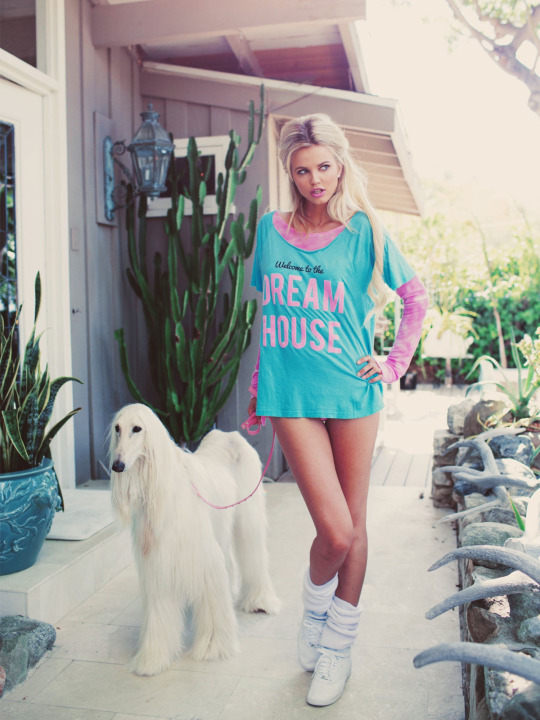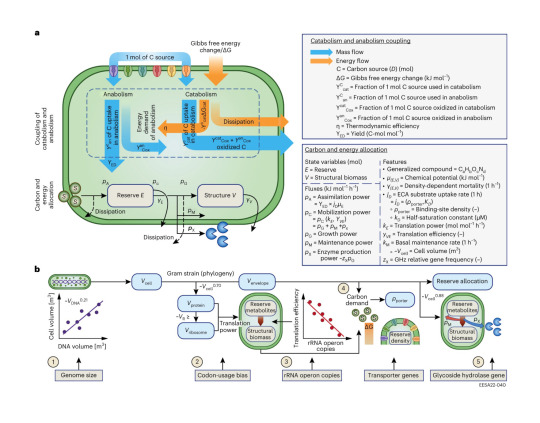#hopland
Text

Katharine Cole of KZYX and Yvonne Boyd of Ranchomatic Studios. There’s a lot going on in Hopland!
0 notes
Text


Kirby Griffin and Merethe Hopland in Wildfox’s Barbie Dream House Resort lookbook (2014) ✧*:・゚✧
#kirby griffin#merethe hopland#wildfox#lookbook#photography#euphoricdior’s posts#barbie#barbie dream house#pink#pink aesthetic#pink core#pinkcore#pink blog#early 2010s#2014 tumblr#princess#beauty#hair#high maintenance#coquette#fashion#princesscore#modeling#sleeping beauty#girly#girlblogging#feminine#cozycore#doll#dollete
396 notes
·
View notes
Text

Merethe Hopland
24 notes
·
View notes
Text
Vashwood i didnt know i was pregnant.
After the dust settles vash and wolfwood settle in Hopland and help with tye orphanage, Vash having stomache pains for the past few days no clue why decides to do a visit to ship 3 since their close to hopeland and their drs know vashs biology. Well as he starts offto the ship the pains get worse more frequent and by the time he arrives he can barely move.
Cue the drs, Brad + Ludia panicking and rushing him to the ships hospital/infirmary only to discover hes in active labour and this baby aint waiting. Ludia being the boss she is takes carge and demands that brad go radio Wolfwood to get his ass here and while she stays with vash and help support him until wolfwood can get there.
Vash is a little scared and confused at how the hell this happened (he was told the parts dont work) and why did he not know!? Thankfully delivers a healthy baby girl and wolfwood gets there not long after.
#vashwood#wolfwood x vash#wolfwood#nicholas d. wolfwood#trigun#tristamp#trigun maximum#trigun stampede#vash the stampede#vash#vashwood would be girl dads#bby being like surprise motherfucker!#washwood i didnt know i was pregnant au
40 notes
·
View notes
Text

Clos Pegase Cabernet Sauvignon 2021. Estate Grown. Napa Valley. Produced and Bottled by Clos Pegase, Hopland. California. 14.5% USA 🇺🇸
•
Rojo cereza oscuro. Recuerdos de frutos negros, blackberries. Tabaco, notas de madera. En boca frutos de bosque, mineral. Acidez equilibrada. Retrogusto largo.
•
Mi Puntuación 93/100
•
#highspirits #lapenadelquijote #lapeñadelquijote #clospegase#california #cabernetsauvignon #wine #wines #goodwines #wineup #winegeek #winetime #hopland
4 notes
·
View notes
Text
Fashionably Fascist
“They’re a bloody disgrace – just look at the state of them. A bunch of overweight, bald slobs making absolute arses of themselves!” This condemnation of those who took part in the UK’s recent far-right anti-immigration riots comes from a surprising quarter: Arthur Hoplander, leader of the British Federation of Fascists. “As a fascist, I’m utterly ashamed to have our movement linked with them,”…
0 notes
Text
Beer Events 8.14
Events
Duke Adolf V of Berg granted a city charter to Dusseldorf & allowed them to brew free for a year and a day to encourage brewers to settle there (1288)
Düsseldorf, Germany founded (1288)
Beer House Amendment Act defines "on" and "off" premises licenses (England; 1834)
Jacob Perkins patented an Apparatus and Means for Producing Ice, and in Cooling Fluids (1835)
William Koenig died (1901)
John Labatt kidnapped (released 3 traumatic days later; 1934)
Jean Leperre patented a Receptacle with Elastic Bag Insert and System for Filling and Emptying the Same (1951)
Ground broken for L.A. Busch Gardens (1963)
Calvin Schneiter patented a Device for Measuring and Displaying the Amount of Beer in a Keg (2007)
Kevin Dale patented a Method of Presenting Beer (2012)
Brewery Openings
Hopland Brewery / Mendocino Brewing (California; 1983)
0 notes
Text










Napa, CA (No. 2)
Wine Country is a region of California, in the northern San Francisco Bay Area, known worldwide as a premier wine-growing region. The region is famed for its wineries, its cuisine, Michelin star restaurants, boutique hotels, luxury resorts, historic architecture, and culture. Viticulture and wine-making have been practiced in the region since the Spanish missionaries from Mission San Francisco Solano established the first vineyards in 1812.
There are over 1700 wineries in the North Bay, (according to Alcoholic Beverage Control of California), mostly located in the area's valleys, including Napa Valley in Napa County, and the Sonoma Valley, Alexander Valley, Dry Creek Valley, Bennett Valley, and Russian River Valley in Sonoma County. Wine grapes are also grown at higher elevations, such as Atlas Peak and Mount Veeder AVAs. Cities and towns associated with the Wine Country include SantaRosa, Healdsburg, Sonoma, Kenwood, Petaluma, Sebastopol, Guerneville, Windsor, Geyserville, and Cloverdale in Sonoma County; Napa, Yountville, Rutherford, St. Helena and Calistoga in Napa County; and Hopland and Ukiah in Mendocino County. Wine is also an important part of the economy in nearby Lake and Solano Counties.
Source: Wikipedia
#Napa#Napa Valley#don't drink and drive#travel#original photography#vacation#tourist attraction#landmark#cityscape#landscape#Napa County#wine country#Bay Area#summer 2022#USA#California#West Coast#flora#sunset#palm tree#hills#silhouette
1 note
·
View note
Text


Kirby Griffin and Merethe Hopland in Wildfox’s Barbie Dreamhouse Resort lookbook (2014) ʚɞ ⁺˖
#kirby griffin#merethe hopland#wildfox#barbie#barbie dream house#malibu barbie#coquette#pets#dogs#hair#fashion#euphoricdior’s posts#pink#pinkcore#pink core#pink blog#pink aesthetic#2014 tumblr#girly#princess aesthetic#makeup#nostalgia#model#modeling#photography#princess#high maintenance#dollette#princesscore#girlblogging
19 notes
·
View notes
Text
Improving Climate Predictions By Unlocking The Secrets of Soil Microbes
— By Julie Bobyock, Lawrence Berkeley National Laboratory | February 5, 2024

Overview of DEBmicroTrait. Credit: Nature Microbiology (2024). DOI: 10.1038/s41564-023-01582-W
Climate models are essential to predicting and addressing climate change, but can fail to adequately represent soil microbes, a critical player in ecosystem soil carbon sequestration that affects the global carbon cycle.
A team of scientists led by the Department of Energy's Lawrence Berkeley National Laboratory (Berkeley Lab) has developed a new model that incorporates genetic information from microbes. This new model enables the scientists to better understand how certain soil microbes efficiently store carbon supplied by plant roots, and could inform agricultural strategies to preserve carbon in the soil in support of plant growth and climate change mitigation.
"Our research demonstrates the advantage of assembling the genetic information of microorganisms directly from soil. Previously, we only had information about a small number of microbes studied in the lab," said Berkeley Lab Postdoctoral Researcher Gianna Marschmann, the paper's lead author.
"Having genome information allows us to create better models capable of predicting how various plant types, crops, or even specific cultivars can collaborate with soil microbes to better capture carbon. Simultaneously, this collaboration can enhance soil health."
This research is described in a new paper that was recently published in the journal Nature Microbiology. The corresponding authors are Eoin Brodie of Berkeley Lab, and Jennifer Pett-Ridge of Lawrence Livermore National Lab, who leads the "Microbes Persist" Soil Microbiome Scientific Focus Area project.
Seeing the Unseen: Microbial Impact on Soil Health and Carbon
Soil microbes help plants access soil nutrients and resist drought, disease, and pests. Their impacts on the carbon cycle are particularly important to represent in climate models because they affect the amount of carbon stored in soil or released into the atmosphere as carbon dioxide during the process of decomposition.
By building their own bodies from that carbon, microbes can stabilize (or store) it in the soil, and influence how much, and for how long carbon remains stored belowground. The relevance of these functions to agriculture and climate are being observed like never before.
However, with just one gram of soil containing up to 10 billion microorganisms and thousands of different species, the vast majority of microbes have never been studied in the lab. Until recently, the data scientists had to inform these models came from only a tiny minority of lab-studied microbes, with many unrelated to those needing representation in climate models.
"This is like building an ecosystem model for a desert based on information from plants that only grow in a tropical forest," explained Brodie.
The World 🌎 Beneath Our Feet 🦶🦶
To address this challenge, the team of scientists used genome information directly to build a model capable of being tailored to any ecosystem in need of study, from California's grasslands to thawing permafrost in the Arctic. With the model using genomes to provide insights into how soil microbes function, the team applied this approach to study plant-microbiome interactions in a California rangeland. Rangelands are economically and ecologically important in California, making up more than 40% of the land area.
Research focused on the microbes living around plant roots (called the rhizosphere). This is an important environment to study because, despite being only 1-2% of Earth's soil volume, this root zone is estimated to hold up to 30-40% of Earth's carbon stored in soils, with much of that carbon being released by roots as they grow.
To build the model, scientists simulated microbes growing in the root environment, using data from the University of California Hopland Research and Extension Center. Nevertheless, the approach is not limited to a particular ecosystem. Since certain genetic information corresponds to specific traits, just as in humans, the relationship between the genomes (what the model is based on) and the microbial traits is transferable to microbes and ecosystems all over the world.
The team developed a new way to predict important traits of microbes affecting how quickly they use carbon and nutrients supplied by plant roots. Using the model, the researchers demonstrated that as plants grow and release carbon, distinct microbial growth strategies emerge because of the interaction between root chemistry and microbial traits.
In particular, they found that microbes with a slower growth rate were favored by types of carbon released during later stages of plant development and were surprisingly efficient in using carbon—allowing them to store more of this key element in the soil.
The Root of the Matter
This new observation provides a basis for improving how root-microbe interactions are represented in models, and enhances the ability to predict how microbes impact changes to the global carbon cycle in climate models.
"This newfound knowledge has important implications for agriculture and soil health. With the models we are building, it is increasingly possible to leverage new understanding of how carbon cycles through soil. This in turn opens up possibilities to recommend strategies for preserving valuable carbon in the soil to support biodiversity and plant growth at scales feasible to measure the impact," Marschmann said.
The research highlights the power of using modeling approaches based on genetic information to predict microbial traits that can help shed light on the soil microbiome and its impact on the environment.
#Biology 🧬 🧪#Ecology#Cell & Microbiology 🧫#Nanotechnology#Physics#Earth 🌍#Astronomy 🪐 🔭 & Space#Chemistry 🧪 ⚛️#Other Sciences#Medicine 💊#Technology#Phys.Org#Julie Bobyock | Lawrence Berkeley National Laboratory 🥼 🧪#Almeda County | California | USA 🇺🇸
0 notes
Text

Duckhorn North Coast Sauvignon Blanc North 2023. Cellared and Bottled by Duckhorn Vineyards, Hopland. California. 14.1% USA 🇺🇸
•
Sauvignon Blanc 91%
Sémillon 9%
•
Amarillo pajizo, brillante. Recuerdos de frutas tropicales, piña. Notas de melón. Cítricos, limón. En boca frutos tropicales, toque mineral, freco, agradable.
•
Mi Puntuación 93/100
•
#elcatador #brindoconelcatador #wine #wines #duckhornwines #instawine #lapeñadelquijote #lapenadelquijote #goodwines #winegeek #winetime
0 notes
Link
HOPLAND, CA (September 25, 2023) — Four people suffered moderate to major injuries in a multi-car accident on Highway 101 near Old River Road.
0 notes




